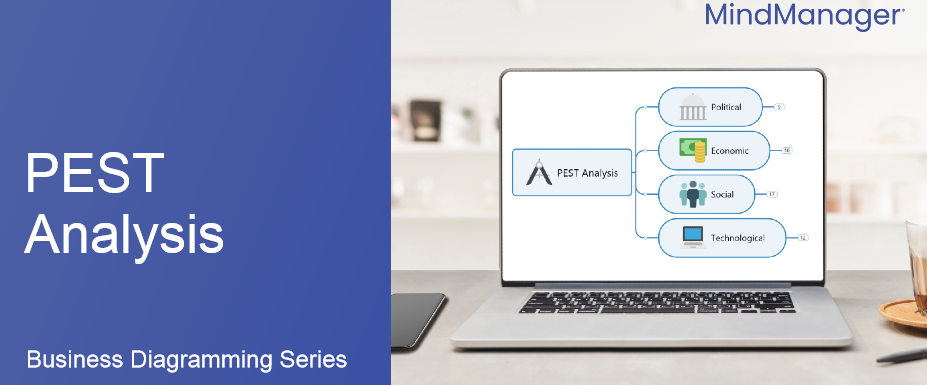By: Emily Finlay
Businesses don’t operate in a bubble. Every change or development in the environment around them affects the business, sometimes for good and other times not.
When analyzing your business or doing market research, you have to take these factors into consideration. Understanding these influences prepares you to take advantage of opportunities and guard against threats.
With PEST analysis, you can outline and plan for the factors that can either support or limit your business and projects. This guide will help you understand how to use this technique to propel your business to success through any environmental shift.
What is PEST analysis?
PEST Analysis is a business analytics tool used to identify the Political, Economic, Socio-Cultural, and Technological factors that may affect your business’ success. This framework evaluates these macro-environmental forces to determine which are threats and which present valuable opportunities.
Though no one knows for sure, many believe a Harvard professor named Francis Aguilar is the creator of this tool. In 1967, he published a book called “Scanning the Business Environment.” This book described a technique that businesses could use to analyze their outside influences. He called the tool ETPS, for the Economic, Technical, Political, and Social factors it examined. Since the 1980s, after going through several variations, it has been identified by the title we still use today: PEST.
It’s important to note, however, that you may often see it referred to as PESTLE. Some analysts create separate columns for Legal and Environmental factors. While you can use this option, many choose to add these influences into the categories already included in PEST.
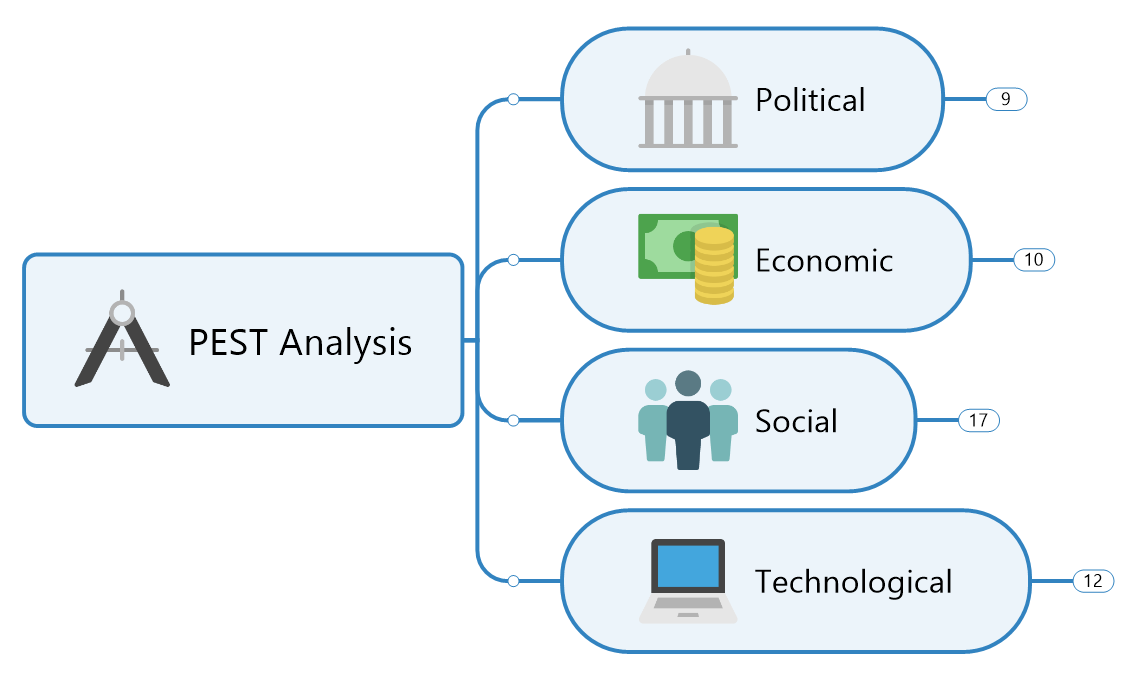
What are the benefits of PEST analysis?
PEST Analysis shows you the big picture of everything happening around you and how it can affect your business. Some of the main PEST Analysis benefits include:
- Showing where things are going on a broader level, giving you insight into what you need to do to adjust or keep up
- Identifying the opportunities you can take to stay ahead of the competition and changes
- Empowering informed decision making rather than relying on assumptions
- Guiding product and business development
- Evaluating risks before making major moves
Now that we’ve outline what a PEST analysis is, and what the benefits are, let’s dive into how to use this technique.
How to use PEST analysis
To use PEST Analysis, start by listing the political, economic, socio-cultural, and technological factors that may influence your business. Next, examine these factors to see how they affect each other and, ultimately, your work.
So, how do you know what to list in each category? Use the information below to understand how to create your own PEST Analysis.
Political
As you might expect, this category covers what is happening in politics and how it affects you. More specifically, you should only include the political factors that make a difference in your business world.
For example, you should consider any regulations and laws that affect your work, products, employees, processes, and ability to be profitable. While some influences, such as tax laws, will affect every business, others will be specific to your industry and needs.
You will also need to evaluate the effects of elections. The specific person holding an office may not be of significance, but the legislation they support will. Even if you aren’t invested in politics, it’s important to be aware of anything that will change the way you operate.
How do I determine these factors: Questions to ask
- What are the laws and regulations that affect the way I do business?
- When is the next election that will affect me (local, state, or national)?
- Depending on who is elected, how will this change things for me?
- Is there any proposed or pending legislation that will affect me? When would these changes happen?
- How does the political climate affect my business?
Economic
The state of the economy affects both how much money people are spending and what they are willing to spend it on. For this category, take a look at the current state as well as anticipated changes. As seen in periods of economic turmoil, you can’t always predict where the economy is going. Examining factors such as inflation, exchange rates, interest rates, unemployment, and economic growth can give you an idea of what you need to do to set your business up for success.
How do I determine these factors: Questions to ask
- How healthy is the current economy?
- What are the indicators for its future state and what are they saying?
- What are the state and national unemployment rates? Is it wise to pursue an opportunity that requires a larger workforce right now?
- What are the current and projected inflation, exchange, and interest rates?
- Do your customers have the disposable income and access to credit to buy your products? Has or will this change?
Socio-Cultural
Also referred to as social factors, these are the influences that typically affect consumers and their interest in your product. They can also determine the demographics and characteristics of your workforce. These forces can range from current attitudes and trends to the rate of population growth and age distribution.
If you sell junk food, for example, and there’s a sudden cultural push for healthier choices, this can drastically affect your business. Or, if population growth slows, businesses may face a shortage of labor and a workforce that is rapidly approaching retirement.
On the other hand, these changes may also offer incredible opportunities. If your company focuses on sustainability, you will see more success today than you did 20 years ago. Until you find and analyze these factors, however, you won’t be able to prepare for them.
How do I determine these factors: Questions to ask
- How do generational changes affect your operations and success?
- What cultural shifts are taking place? How will they influence you?
- What trends and patterns can you see in the job market and employment?
- Are there any cultural taboos that affect your business, product, or operations?
- What are the growth rate and demographics of the population?
Technological
Though this set of factors may not have been the highest priority when this tool was created, it now changes as quickly as the others. In fact, technology today often facilitates shifts in society, politics, and the economy through developments such as social media.
Technology is central to almost every aspect of business, no matter the industry. For this category, you’ll want to analyze the technology your company relies on and is affected by. This includes the software and hardware you use to develop, create, and sell your products. You should also consider the tools you use to run your business.
How do I determine these factors: Questions to ask
- What new and upcoming technologies will affect your business?
- Do your tools meet the same standards/offer the same capabilities as other options?
- Have work patterns changed with technology (such as remote work)?
- Do you competitors use technologies that give them an advantage?
- Are you using every available resource to optimize your use of your technology?
How to create a PEST analysis
Completing a PEST Analysis is both simple and straightforward. Start by creating a board with four columns, labeled Political, Economic, Socio-Cultural, and Technological. You can also create two sections within each column for the threats and opportunities found in each category.
Depending on your preferences, you can draw your chart out on a whiteboard or with paper and pen. Digital tools such as MindManager are also ideal for PEST Analyses. With the help of pre-built templates, you can quickly create your diagram.
In a group brainstorming session, identify and fill the board with the various threats and opportunities that exist within these categories. As you go through each column, ask questions similar to the ones included above.
Lastly, determine how you can either use or protect against these factors. Create a business plan that addresses the influences you identify. With this comprehensive strategy, you can ensure long-term business success.
Example of PEST analysis
Though the PEST Analysis diagram is simple, it can help to understand exactly what you are creating. Use the example below, plus our helpful templates, to develop your own chart.
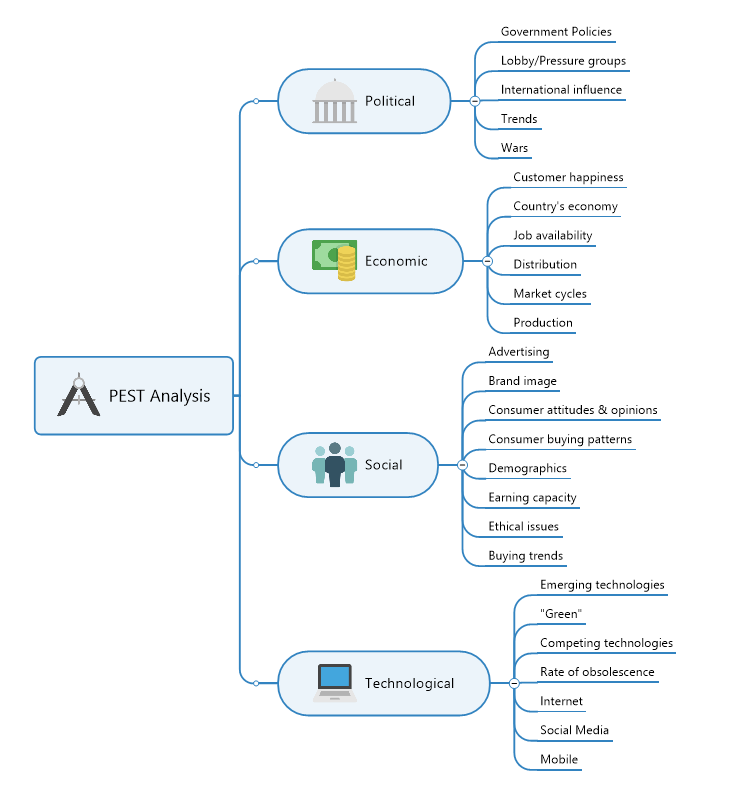
PEST analysis use cases
Since this tool identifies threats and opportunities, you should use it on a regular basis to keep your business prepared for any eventuality. In the event of a major change within your business, such as a new product or expansion, a PEST Analysis should be part of your standard procedures.
In the event of a new product, for example, this tool should be one of your first actions. Along with determining if the climate is right for your product, it can help you find the type of product most likely to succeed in the current and upcoming market. Your analysis will also help you plan for anything, such as shifting legislation, that might affect your outcomes.
Or if your company had the opportunity to execute a project in another country, you could use a PEST Analysis to determine the viability of this expansion. By developing an in-depth understanding of everything involved, you can confidently lead your business to exciting opportunities and continued growth.
Downloadable PEST analysis templates from MindManager
Click the images below to access the PEST shared above, and a blank template created using MindManager. Click “Menu” in the bottom left corner of your browser window, and then click “Download” to get a copy of the template. Open the template in MindManager to start working.
Don’t have MindManager? No worries! Try it free for 30 days.
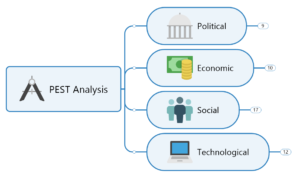
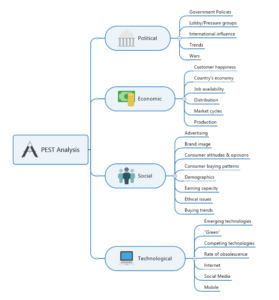
[/vc_column_text][/vc_column][/vc_row]

